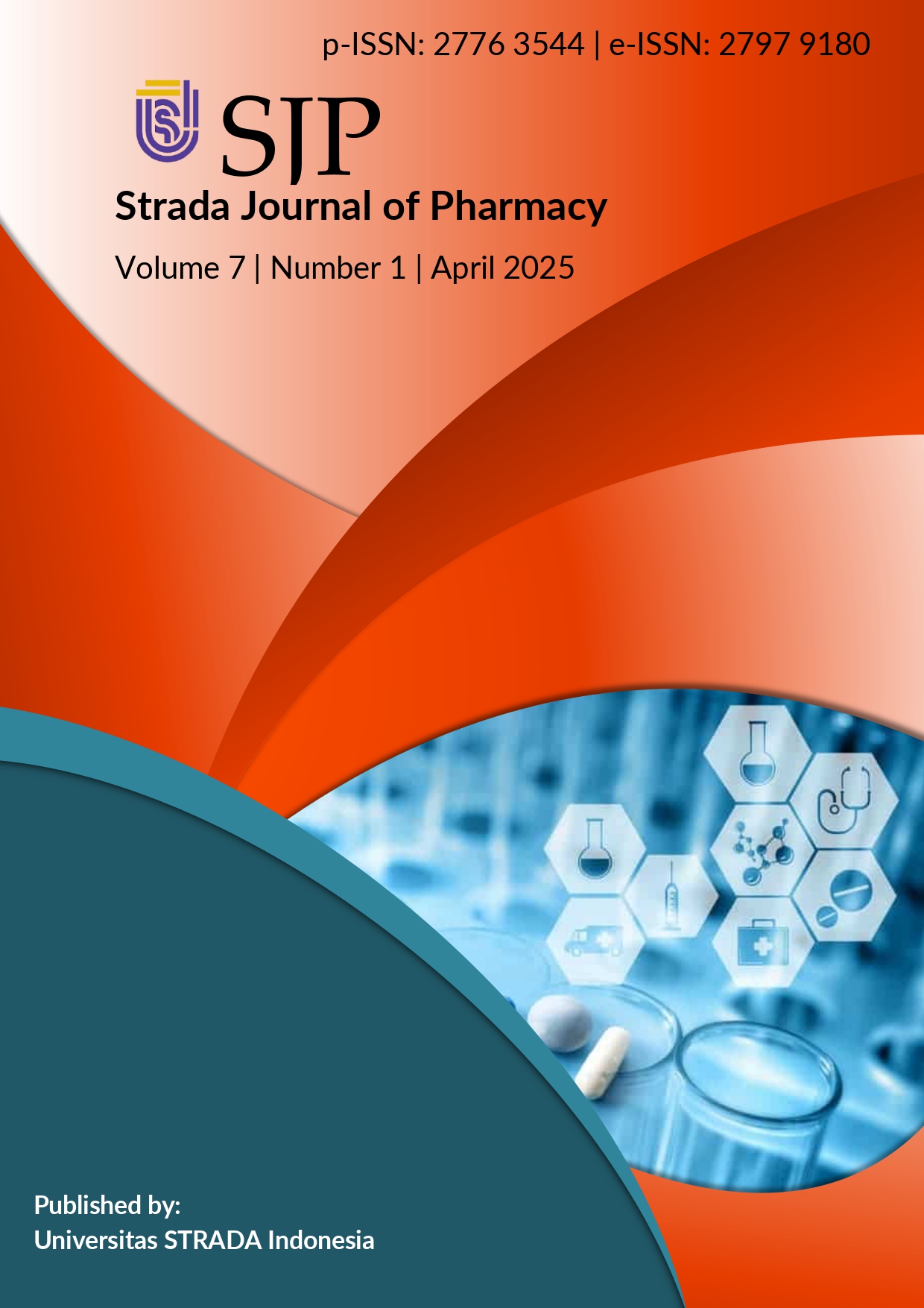A Physical Quality and Antioxidant Test of Strawberry Leaf Fraction Lotion DPPH Method (1,1- Diphenyl-2- Picryhydrazyl)
DOI:
https://doi.org/10.30994/sjp.v7i1.176Keywords:
Lotion, Strawberry Leaf Fraction, Antioxidant, DPPH, Physical QualityAbstract
Lotion is a cosmetic preparation that functions to moisturize and protect the skin by providing a soothing effect. This research utilizes natural ingredients in the form of strawberry leaf extract (Fragaria vesca) to create a lotion formulation with high antioxidant activity. The objective of this study is to determine the effect of varying concentrations of strawberry leaf extract on the physical quality and antioxidant activity of the lotion. This experimental study involved formulating lotions with different concentrations of strawberry leaf extract at 2%, 4%, and 6%. The antioxidant activity was evaluated using the DPPH (1,1-Diphenyl-2-Picrylhydrazyl) method to measure the extract's ability to scavenge free radicals. The main active component in strawberry leaf extract is polyphenol compounds, which act as natural antioxidants in cosmetic products. The results showed that the strawberry leaf fraction lotion had a soft texture, green color, and a characteristic strawberry leaf scent. The pH test had a significance value of 0.00. The viscosity test also had a significance value of 0.00. The adhesion test results showed a significance value of 0.00, and the spreadability test also had a significance value of 0.00. The DPPH antioxidant test showed regression values of 0.932 for the positive control, 0.854 for the negative control, 0.948 for F1, 0.985 for F2, and 0.967 for F3. This study provides strong evidence that strawberry leaf fraction is suitable as an active ingredient in antioxidant cosmetic products, with the potential to compete with conventional ingredients. The SPSS test results showed a significant effect of concentration on free radical inhibition, as well as significant differences in pH, spreadability, and adhesion tests among the formulations. However, some groups did not meet the assumptions of normality and homogeneity, indicating the need for alternative analytical methods for further validation





